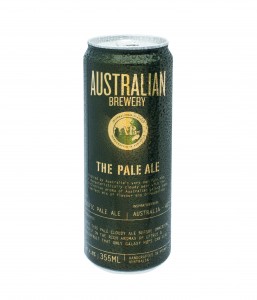Tim Smith Wines Shiraz 2012 $36
Barossa Valley, South Australia
Wine judges and critics appear to have moved well ahead of wider public tasted in their support of leaner, elegant cool-climate shirazes. Time and again at tastings I see people opting for the riper, fleshier styles from warm areas – particularly the Barossa and McLaren Vale. Tim Smith’s is a succulent example of the latter style. It’s irresistibly, ripe and fleshy – so easy to drink now, yet with years of cellaring ahead. Tim Smith writes, “I source my shiraz grapes from about six vineyards… Vine age is +100 years for the oldest parcel, with the youngest parcel being about 20 years of age”.
Clonakilla Hilltops Shiraz 2012 $28–$32
Hilltops, NSW
Heavy rain towards the end of February 2012 destroyed large volumes of ripe, or near ripe grapes in Canberra and surrounding districts. Clonakilla lost much of its Canberra fruit in the event. But, says Tim Kirk, they harvested most of their fruit from the Hilltops region (around Young, NSW), the day before the 200mm deluge arrived. The result is a delightfully rich red combining ripe, dark-cherry flavours with the spice and touch of black pepper we see from cooler areas. The wine’s medium bodied and shows the Clonakilla signature of great harmony and silky, juicy mid palate. Judges awarded it a bronze medal regional show, but I rate it more highly.
Mad Fish Gold Turtle Chardonnay 2012 $14.25–$15
Margaret River, Western Australia
A mad fish and a gold turtle seem unlikely companions in a wine name. But the wine, from Jeff and Amy Burch’s Howard Park Winery, Margaret River, offers extraordinarily good drinking at a bargain price. Sourced from the Wilyabrup and Karridale sub-regions, Gold Turtle Chardonnay offers bright, fresh nectarine-like varietal flavour with lively acidity and a rich texture derived from a natural fermentation in barrel and extended maturation on yeast lees. The screw cap on wines of this calibre enables reliable cellaring for perhaps five years from vintage.
Coldstream Hills Rising Vineyard Chardonnay 2012 $42–$45
Rising vineyard, Yarra Valley, Victoria
Coldstream Hills, now part of Treasury Wine Estates, produces several Yarra Valley chardonnays – a general blend, a “reserve” version and, in 2012, two single-vineyard wines, “Deer Farm Vineyard” and “Rising Vineyard”. The latter demonstrates the symbiotic relationship between top-notch chardonnay and oak. Winemaker Andrew Fleming fermented then matured the wine win in French oak – 60 per cent of it new. That’s a high proportion and works only if the fruit is up to it and the oak exactly right. It’s a beautiful wine, seamlessly integrating intense, vibrant nectarine-like varietal flavours with spicy oak and all the subtle textural and flavour nuances derived from contact with the barrels and yeast lees.
Wilson Watervale Riesling 2013 $19
Wilson vineyard, Watervale, Clare Valley, South Australia
John Wilson made wines originally from the Clare Valley’s Polish Hill River sub-region. He later sourced fruit, as well, from Watervale, towards the valley’s southern end. Wilson’s son Daniel now makes several Clare rieslings, including this full-flavoured, finely textured version. The mid-lemon colour and full, upfront flavour make attractive current drinking, though the wine should evolve well for three or four years.
Champagne Taittinger Brut Reserve NV $50–$60
Champagne, France
With a little more chardonnay in the blend than most NV’s (40 per cent versus about 33 – the remainder pinot noir and pinot meunier), good old Taitts giggles on the light and cheery side of Champagne, with seemingly little lees-aged character. Nevertheless, it’s a lovely, delicate aperitif style with the lightness of chardonnay and yummy brioche-like nuances of pinot meunier, the lesser of the two pinots, but indispensable nevertheless. Pinot meunier tends to fill the frost-prone dips in the Champagne region and is more fruitful than pinot noir in this situation as it buds later, giving it better odds of missing the chill. As wine, it matures earlier than pinot noir, thus fleshing out the mid palate of younger Champagnes.
Copyright Chris Shanahan 2013
First published November 2013 in the Canberra Times and goodfood.com.au
